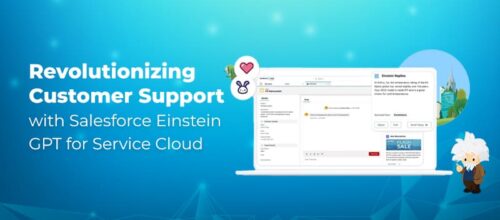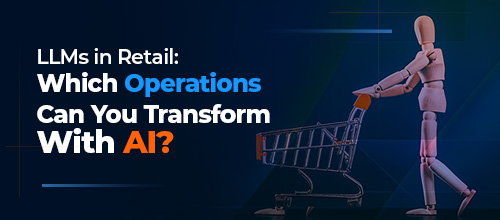The Evolution of APIs: From Basic Integration to Powerful Ecosystems

Written by Ali Akthar
Middleware Practice Lead at Royal Cyber Inc
August 31, 2023
Foundations of API Integration
In the ever-evolving world of technology, Application Programming Interfaces (APIs) have played a pivotal role in transforming how applications, services, and systems communicate. APIs have come a long way from simple integration tools to becoming the backbone of robust ecosystems that drive innovation, collaboration, and seamless connectivity. In this blog, we will explore the fascinating journey of APIs, highlighting their evolution from essential integration to the establishment of robust and dynamic ecosystems. We will also discuss the significance of APIs in today’s digital landscape and explore their future possibilities.
Need help understanding key concepts about APIs? Read the guide to API integration and universal API management.
Expanding Horizons: API Economy Emergence
In 2023, several API trends have evolved, which are expected to shape the development and integration of software applications. Here are some of the best APIs evolved that are trending and are used for different purposes:
GraphQL
GraphQL is a query language that enables customers to request specific data and reduce over-fetching or under-fetching. It provides a more efficient and flexible way to retrieve data than traditional REST APIs. GraphQL is gaining popularity and is expected to continue growing in 2023. Unlike traditional REST APIs that often return fixed data structures, GraphQL allows clients to request the data they need precisely. Clients can specify the fields and relationships they require in a single request, eliminating the problem of over-fetching or under-fetching data. It reduces unnecessary data transfer and improves the overall efficiency of data fetching. Using its flexible query syntax, GraphQL enables clients to retrieve multiple resources in a single request.
Instead of making multiple API calls to retrieve related data, clients can use GraphQL’s nesting and aliasing features to fetch all required data in one go. It reduces the number of round trips between the client and server, minimizing latency and improving performance. With GraphQL, APIs can evolve their schemas without breaking existing clients. Clients can query for the specific fields they need, meaning they are not affected by additions or modifications to the schema unless they utilize the new fields. It will allow for smoother versioning and backward compatibility, making introducing changes to the API over time easier. GraphQL schemas define a strong typing system that describes the available data and operations. It provides clear and self-documenting APIs, making it easier for developers to understand and consume the API. The schema is a contract between the client and server, ensuring clients receive the expected data and reducing potential errors during development. GraphQL’s declarative nature allows front-end developers to iterate quickly by fetching the needed data. They can experiment with different queries without relying on backend changes or additional API endpoints. It empowers developers to work independently and deliver features faster. GraphQL has a vibrant ecosystem and a wide range of tooling built around it. Library, frameworks, and developer tools are available for various programming languages and platforms, making integrating GraphQL into existing systems easier. These tools provide features like code generation, linting, caching, and performance optimization, further enhancing the development experience.
Here’s an example of a GraphQL code snippet to demonstrate a basic schema and query:
type Book {
id: ID!
title: String!
author: String!
publicationYear: Int!
}
type Query {
book(id: ID!): Book
books: [Book]
}
In this example, we have defined a GraphQL schema that includes two types: Book and Query. The Book type represents a book entity with fields such as id, title, author, and publicationYear. The Query type defines the available queries that can be executed.
query {
books {
id
title
author
publicationYear
}
}
In this query, we are requesting a list of all books. We specify the fields we want to retrieve for each book: id, title, author, and publicationYear.
{
"data": {
"books": [
{
"id": "1",
"title": "Book Title 1",
"author": "Author 1",
"publicationYear": 2021
},
{
"id": "2",
"title": "Book Title 2",
"author": "Author 2",
"publicationYear": 2022
},
...
]
}
}
The response includes an array of books, where each book object contains the requested fields: id, title, author, and publicationYear.
This is a basic example to illustrate the structure of a GraphQL schema, a query, and a corresponding response. In practice, you typically have more complex schemas, mutations for modifying data, and additional query arguments to make the API more powerful and flexible.
Event-driven APIs
Event-driven architectures are becoming increasingly popular as they enable real-time communication and responsiveness. APIs designed to emit events and support event-driven architectures allow applications to react to changes and trigger actions based on events, such as updates to data or system events. Events represent significant occurrences or changes within a system or domain. Various actions, such as user interactions, system events, data updates, or external notifications, can trigger them. Events typically carry relevant data or metadata that describes the event and its context. Event producers are components or services responsible for generating and publishing events. They detect relevant changes or actions and emit corresponding events.
Event producers can be API endpoints, backend services, databases, external systems, or IoT devices. Event consumers are components or services that subscribe to and consume events. They listen to events they are interested in and react accordingly. Event consumers can be API endpoints, microservices, serverless functions, or other systems that need to react to specific events. Event-driven APIs often use event brokers or message queues as intermediaries for event communication. Event brokers receive published events from producers and distribute them to interested consumers. They decouple event producers and consumers, ensuring reliable event delivery and scalability. Event-driven APIs operate asynchronously. When an event is published, it is not processed immediately by a consumer. Instead, it is placed in a queue and consumed when the consumer is ready to process it. This asynchronous nature enables loose coupling, scalability, and resilience in distributed systems.
Event-driven APIs enable the creation of event-driven workflows, where multiple services or components can react to and collaborate based on events. Events trigger specific actions or workflows in response to certain conditions, enabling the building of complex, event-driven architectures. Event-driven APIs are particularly useful for providing real-time updates and notifications. Instead of relying on frequent polling or periodic requests, clients can subscribe to relevant events and receive instant updates when specific events occur. This allows for timely and efficient data synchronization across multiple systems. Event-driven APIs commonly use structured data formats like JSON or XML to represent events. The data format includes the event payload, which carries relevant information about the event itself. Standardized schemas or contracts may be employed to ensure interoperability and consistency in event payloads.
Event-driven APIs offer numerous benefits, including scalability, decoupling of components, real-time communication, and the ability to react to changes and events as they happen. They are well-suited for real-time collaboration, data synchronization, notifications, and distributed systems where timely updates and event-driven workflows are crucial.
An example of event-driven API code using Node.js and the Express framework:
const express = require('express');
const app = express();
const port = 3000;
// Event endpoint to receive events
app.post('/events', (req, res) => {
const event = req.body; // Assuming the event data is sent in the request body
// Process the event
// Perform actions based on the event type and data
// Emit the event to event consumers or trigger further actions
res.sendStatus(200); // Send a success response to the event producer
});
app.listen(port, () => {
console.log(`Event-driven API listening at http://localhost:${port}`);
});
In this example, we have an /events endpoint that receives events through a POST request. The event data is assumed to be included in the request body. Your event payload structure is typically defined based on your application’s needs.
Inside the endpoint handler, you can process the received event data, perform actions based on the event type and data, and trigger further actions or emit the event-to-event consumers. The logic for processing events can vary depending on your specific requirements and business logic.
This is a basic outline to illustrate the event-driven API code structure. In a real-world scenario, you can integrate with an event broker or message queue system to publish and consume events. You may also implement authentication, validation, and error handling as needed.
Remember to install the required dependencies (express in this case) and start the Node.js server to run the event-driven API.
Low-code APIs
Low-code development platforms empower non-technical users to create applications with minimal coding. Low-code APIs simplify the integration of various services and data sources into these platforms, allowing developers and business users to build applications quickly and easily.
API Security
As the importance of data security continues to grow, API security remains a critical trend. API providers invest in robust security measures, such as authentication, authorization, and encryption, to protect sensitive data and prevent unauthorized access. Read our blog to learn how to manage API security risks with Apigee API Management.
Hypermedia APIs
Hypermedia APIs, also known as HATEOAS (Hypermedia as the Engine of Application State), provide links and metadata within API responses to guide clients on available actions and resources. This self-descriptive nature of hypermedia APIs promotes better discoverability, decoupling of client and server, and simplifies API versioning.
API Marketplaces
API marketplaces serve as platforms for discovering, exploring, and integrating APIs from various providers. These marketplaces provide developers with a centralized location to find and utilize APIs, accelerating application development and fostering innovation.
AI-powered APIs
Artificial Intelligence (AI) and Machine Learning (ML) are being integrated into APIs to enable advanced capabilities such as natural language processing, computer vision, sentiment analysis, and recommendation systems. AI-powered APIs allow developers to leverage pre-trained models and incorporate AI functionality into their applications without building models from scratch.
Watch our webinar to learn about MuleSoft API integration with ChatGPT.
Serverless APIs
Serverless computing allows developers to deploy and run applications without managing the underlying infrastructure. Serverless APIs abstract away server management, scaling, and provisioning concerns enabling developers to focus on writing code and delivering functionality more efficiently.
API Documentation and Testing
Improved API documentation and testing tools are crucial for developers to understand and utilize APIs effectively. Automated testing frameworks and interactive documentation tools are expected to continue to evolve, providing developers with better resources for testing, debugging, and exploring APIs.
API analytics
API analytics help organizations gain insights into API usage, performance, and customer behavior. Advanced analytics platforms provide valuable data to optimize API design, identify usage patterns, and improve overall API strategy.
These trends indicate how APIs evolve, focusing on efficiency, flexibility, security, and usability. By staying current with these trends, developers and organizations can harness the full potential of APIs to build robust and innovative applications.
Hyperconnected API Ecosystems
The evolution of APIs from essential integration tools to powerful ecosystems has paved the way for an interconnected digital landscape. As technology advances, APIs will be more crucial in enabling seamless communication, data exchange, and innovation. The future holds exciting possibilities, including integrating emerging technologies like AI, IoT, and blockchain into API ecosystems.
Conclusion
In conclusion, APIs have come a long way in their evolution, transforming from basic integration tools to the building blocks of robust ecosystems. They have revolutionized how applications and services interact, driving innovation, collaboration, and improved user experiences. As we embrace the future, APIs will continue to evolve and shape our digital world, unlocking new possibilities and driving transformative change. Experience the power of Royal Cyber’s expert API solutions. Harness innovation and drive growth today. Explore our API services for a future-ready business. For more information, you can email us at [email protected] or visit www.royalcyber.com.



